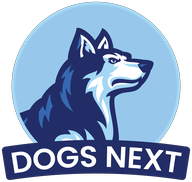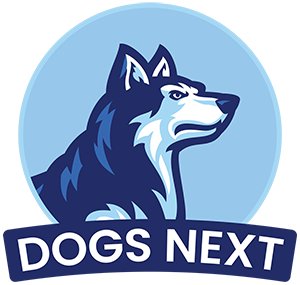Training your dog to come when called is essential. It ensures safety and strengthens your bond.
Teaching this command can be challenging, but it’s achievable with patience and consistency. Whether you’re a new dog owner or just looking to improve your pet’s recall skills, understanding the basics is crucial. A reliable recall can prevent accidents and keep your dog safe in various situations.
It also fosters trust and communication between you and your furry friend. In this guide, we’ll explore effective techniques to train your dog to come every time you call. With the right methods, you’ll soon see positive results, making outings and daily interactions more enjoyable and stress-free. Ready to get started? Let’s dive into the steps for success.
Start With Short Distances And Increase Gradually
Training your dog to come when called every time can be both rewarding and challenging. One key strategy is to start with short distances and increase gradually. This approach helps build your dog’s confidence and ensures consistent success. Here’s how to do it effectively.
Begin Training In A Controlled Environment With Short Distances
Start your training in a quiet, controlled environment. This minimizes distractions and helps your dog focus. A backyard or a quiet park works well. Begin with short distances, around 5-10 feet.
Follow these steps:
- Stand a few feet away from your dog.
- Call your dog’s name followed by the command “come.”
- Use a cheerful and inviting tone.
- When your dog comes, reward them with a treat or praise.
Repeat this process several times. Consistency is key. Keep sessions short, around 5-10 minutes, to maintain your dog’s interest.
Consider using a table to track your dog’s progress:
| Session | Distance | Response Time | Notes |
| 1 | 5 feet | Immediate | Very responsive |
| 2 | 8 feet | 2 seconds | Minor distractions |
Using a table helps track improvements and identify any issues. Adjust your training based on this feedback.
Gradually Increase The Distance As Your Dog Becomes More Responsive
Once your dog reliably comes at short distances, gradually increase the distance. Move back a few feet at a time. Ensure your dog is successful at each new distance before increasing further.
Here’s how to do it:
- Increase the distance by 2-3 feet increments.
- Call your dog using the same command and tone.
- Reward your dog each time they come to you.
Keep a record of each session:
| Session | Distance | Response Time | Notes |
| 3 | 12 feet | 3 seconds | No distractions |
| 4 | 15 feet | 5 seconds | Minor distractions |
If your dog struggles with a new distance, go back to the previous distance. Ensure they are comfortable before increasing again. Patience and consistency are crucial.
As your dog improves, practice in different environments. This helps them respond well in various situations. Remember to keep sessions positive and fun.
Use A Happy And Excited Tone For Encouragement
Teaching your dog to come when called is crucial for their safety and your peace of mind. One effective way to ensure your dog responds is by using a happy and excited tone for encouragement. This tone makes the training session enjoyable and motivates your dog to come to you eagerly.
Always Call Your Dog In An Upbeat, Encouraging Voice
Using an upbeat and encouraging voice can make a big difference in how your dog responds. Dogs are sensitive to your tone and emotions. A happy voice signals to your dog that coming to you is a positive experience.
Here are some tips to ensure your voice is always encouraging:
- Smile while you call: Believe it or not, smiling while you call your dog can change the tone of your voice, making it sound more pleasant.
- Use a higher pitch: Dogs respond better to higher-pitched voices. It makes the call sound more exciting.
- Keep it short and sweet: Use short, simple commands like “Come” or “Here”. Long sentences can confuse your dog.
A sample table to illustrate tone differences:
| Tone | Effect on Dog |
| Happy and Excited | Motivated and Eager |
| Neutral | Indifferent |
| Angry or Frustrated | Scared or Hesitant |
Make The Call Sound Like A Fun And Positive Event
Dogs love fun and play. Making the call sound exciting ensures they associate it with good things. This method helps in building a strong recall response.
Consider these strategies to make your call sound fun:
- Use playful words: Add words like “Good boy!” or “Good girl!” to your call.
- Include rewards: Have treats or toys ready. Reward your dog immediately when they come.
- Change your intonation: Vary your voice to make it sound like a game.
Combining these strategies creates a positive association for your dog. They learn that coming to you leads to fun and rewards.
A quick checklist to make calls positive:
- Use a happy tone
- Be consistent with your commands
- Always reward promptly
- Keep training sessions short and fun
Following these tips ensures your dog will be excited to come to you every time.
Reinforce With Praise And Play
Training your dog to come when called every time is a crucial skill. Reinforcing this behavior with praise and play makes the learning process enjoyable for your furry friend. By using positive reinforcement, you build trust and encourage your dog to respond reliably. Let’s explore how you can use praise and play to train your dog effectively.
Reward Your Dog Immediately After They Respond
Rewarding your dog right after they come to you is essential. This immediate reinforcement helps them associate the behavior with positive outcomes. Here’s how you can do it effectively:
- Use Treats: Have treats ready in your pocket. When your dog comes, give them a treat right away.
- Verbal Praise: Use enthusiastic words like “Good dog!” or “Well done!” immediately after they respond.
- Physical Affection: Pet your dog or give them a gentle scratch behind the ears. Dogs love physical touch as a form of reward.
Immediate rewards help in creating a strong connection between the command and the action. Here’s a table to summarize the key points:
| Action | Reward |
| Dog comes when called | Treat |
| Dog responds to recall command | Verbal Praise |
| Dog obeys recall training | Physical Affection |
Using these effective dog training methods ensures that your dog understands the value of coming when called. It’s a simple yet powerful way to reinforce good behavior.
Include A Game Or Treat To Reinforce The Positive Behavior
Incorporating play or treats into dog recall training makes the process fun. This keeps your dog motivated and eager to respond. Here are some engaging ways to do this:
- Play Fetch: After your dog comes to you, throw a ball or toy for them to fetch. This turns recall training for dogs into a game.
- Treat Hunt: Hide treats around the yard. When your dog comes to you, let them go find the hidden treats. This adds an element of excitement.
- Tug of War: Use a rope toy and engage in a short game of tug of war. This physical activity reinforces the positive behavior.
Teaching your dog to come reliably involves making the experience enjoyable. A table to highlight these activities:
| Activity | Benefit |
| Play Fetch | Encourages physical exercise and fun |
| Treat Hunt | Stimulates their sense of smell and excitement |
| Tug of War | Engages them in physical play |
These dog training techniques for recall not only teach your dog to come when called but also strengthen your bond. By incorporating games and treats, you make the training process enjoyable for both you and your dog.
Frequently Asked Questions
How Do I Train My Dog To Come When Called?
Start with a leash in a distraction-free area. Use treats and praise when your dog comes. Gradually increase distractions and distance. Consistency and patience are key.
Why Won’t My Dog Come When Called?
Your dog may be distracted or not understand the command. Ensure you’re using positive reinforcement and consistent training techniques to improve response.
What Commands Help With Recall Training?
“Come” is the primary command for recall. Pair it with other commands like “stay” or “sit” to improve obedience and control.
How Long Does Recall Training Take?
Recall training duration varies. It can take weeks to months, depending on your dog’s age, breed, and consistency of training.
Conclusion
Training your dog to come when called takes patience and consistency. Practice daily in different environments. Use positive reinforcement to reward good behavior. Keep training sessions short and fun. Stay calm and patient during setbacks. Your dog will learn with time and effort.
Celebrate small successes along the way. A well-trained dog strengthens your bond. Enjoy the journey with your furry friend. Happy training!

I’m David, an expert contributor and writer, with two furry friends of my own, I know the challenges of raising and caring for dogs. From training to nutrition and health, my goal is to provide valuable insights and advice to help create strong bonds and happy, healthy lives. Find me in Twitter.




